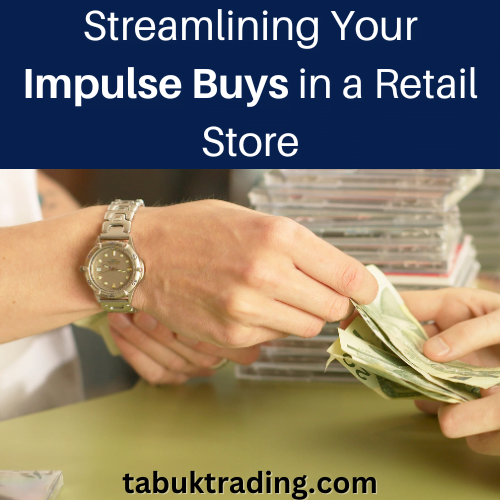In today’s retail environment, impulse buys play a significant role in driving sales and increasing revenue. For retailers, understanding how to streamline and optimize the impulse buying process is crucial for success.
By implementing strategic techniques and best practices, retailers can effectively capitalize on impulse purchases and enhance the overall shopping experience for customers.
Here are some key strategies to streamline your impulse buys in a retail store:
1. Strategic Product Placement:
One of the most effective ways to encourage impulse buys is through strategic product placement. By placing high-margin or popular items in high-traffic areas such as near the checkout counter or at eye level, retailers can capture the attention of customers and prompt them to make additional purchases.
Additionally, creating attractive displays and utilizing signage to highlight special promotions or limited-time offers can further entice customers to make impulse buys.
2. Utilize Technology:
Incorporating technology into the shopping experience can significantly impact impulse buying behavior. Retailers can leverage digital signage, interactive displays, and mobile apps to engage customers and provide real-time product recommendations or personalized offers based on their browsing and purchasing history.
By utilizing technology, retailers can create a more dynamic and interactive shopping environment, ultimately increasing the likelihood of impulse purchases.
3. Offer Sampling and Demonstrations:
Providing opportunities for customers to sample or experience products firsthand can be a powerful driver of impulse buys.
Whether it’s offering food samples in a grocery store or providing product demonstrations in a cosmetics store, giving customers the chance to interact with products can create a sense of urgency and excitement, leading to spontaneous purchases.
4. Create a Sense of Scarcity:
Creating a sense of scarcity or limited availability can effectively prompt impulse buys. By showcasing limited-edition items, exclusive promotions, or seasonal products, retailers can instill a fear of missing out (FOMO) in customers, compelling them to make immediate purchase decisions to secure the desired item.
Additionally, implementing countdown timers or displaying low stock levels can create a sense of urgency, further driving impulse buys.
5. Streamline Checkout Process:
A seamless and efficient checkout process is essential for capitalizing on impulse buys. Long wait times or complicated payment procedures can deter customers from making additional purchases on impulse.
Implementing mobile or self-checkout options and ensuring adequate staffing during peak hours can streamline the checkout process and facilitate quick and convenient transactions, encouraging customers to indulge in impulse buys without hesitation.
6. Leverage Data and Analytics:
Utilizing customer data and analytics can provide valuable insights into purchasing patterns and preferences, enabling retailers to tailor their strategies for maximizing impulse buys.
By analyzing customer behavior, retailers can identify opportunities to cross-sell or upsell products based on individual preferences, ultimately driving higher conversion rates for impulse purchases.
7. Provide Incentives for Impulse Buys:
Offering incentives such as discounts, gifts, or loyalty rewards for impulse purchases can motivate customers to make unplanned buying decisions.
By incorporating incentives into the impulse buying process, retailers can create a sense of value and reward for customers, increasing the likelihood of spontaneous purchases while fostering customer loyalty.
In conclusion, streamlining impulse buys in a retail store requires a strategic approach encompassing product placement, technology integration, experiential marketing, scarcity tactics, streamlined checkout processes, data-driven insights, and incentivized offers.
By implementing these strategies, retailers can optimize impulse buying experience, driving increased sales and cultivating customer satisfaction.
Recap
Product Placement:
- High-Traffic Areas: Place impulse buys near checkout lines, entrances, and high-traffic areas to capture customer attention during moments of browsing.
- Cross-Merchandising: Position complementary products next to each other. For example, pair phone cases with phone chargers or chips with salsa.
Promotional Tactics:
- Targeted Displays: Showcase seasonal items, new arrivals, or special offers with eye-catching displays and signage.
- Limited-Time Promotions: Create a sense of urgency with limited-time discounts or “buy one, get one” deals.
Sensory Appeal:
- Product Packaging: Utilize attractive and creative packaging to draw customers in and make products stand out.
- Pleasant Ambiance: Maintain a clean, well-organized store with pleasant music to create a positive shopping experience.
Customer Service:
- Enthusiastic Staff: Train staff to be knowledgeable and approachable to answer questions and provide buying suggestions.
- Easy Checkout: Ensure a smooth and efficient checkout process to limit cart abandonment due to long lines.
In conclusion, by strategically incorporating these tactics, retailers can turn impulse buying into a powerful tool for boosting sales and customer satisfaction. For a deeper dive into retail optimization strategies and creating a customer-centric shopping experience, explore The Savvy Retailer’s Handbook. This comprehensive guide provides a wealth of practical knowledge to equip you for retail success in today’s dynamic market.
- 5 Ways to Curb Retail Theft in your Store

- 5 Effective Tips for Preventing Till-Point Shortages

- The Art of Increasing Basket Size: Proven Strategies to Boost Your Retail Revenue

- Streamlining Your Impulse Buys in a Retail Store

Buy the Book


